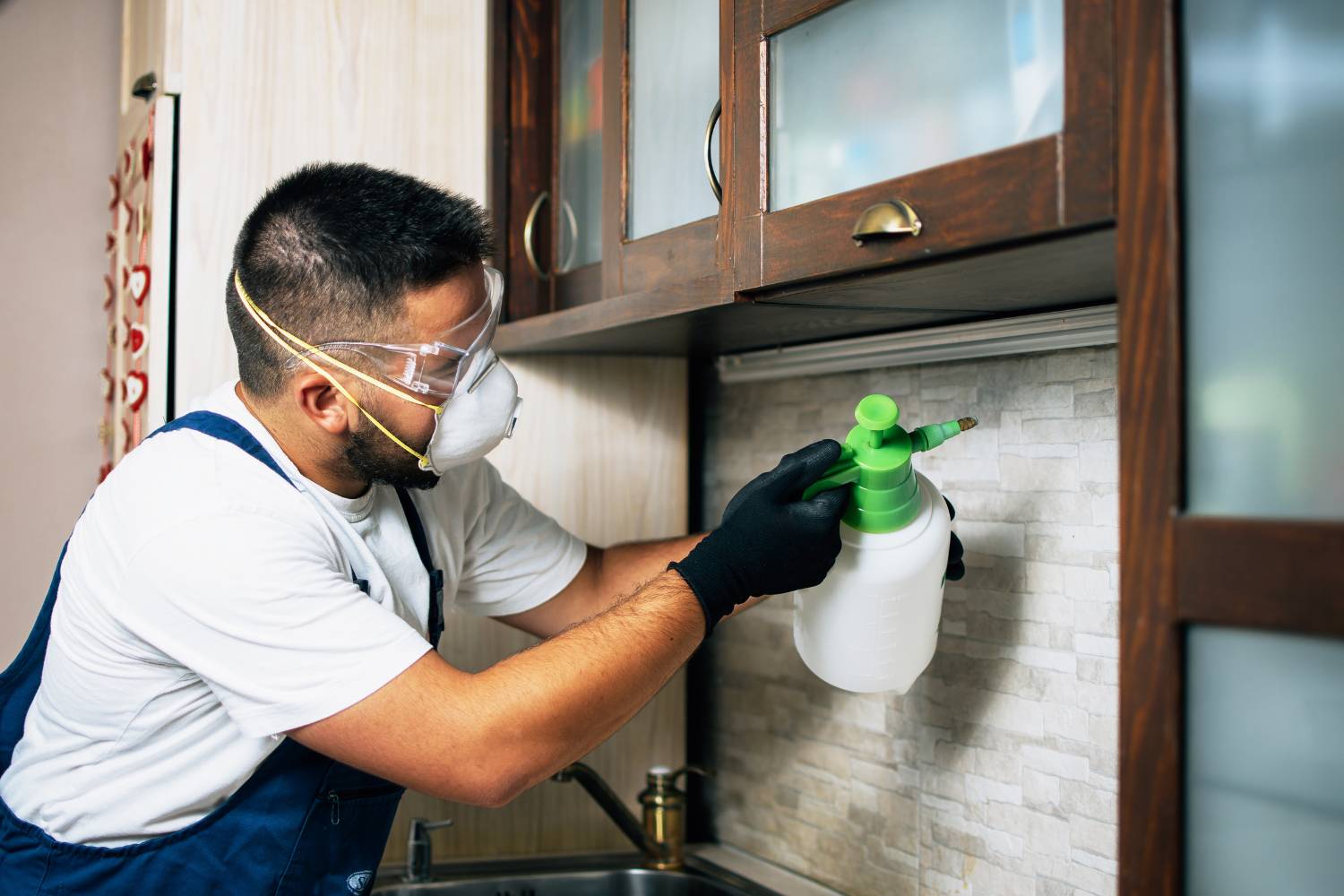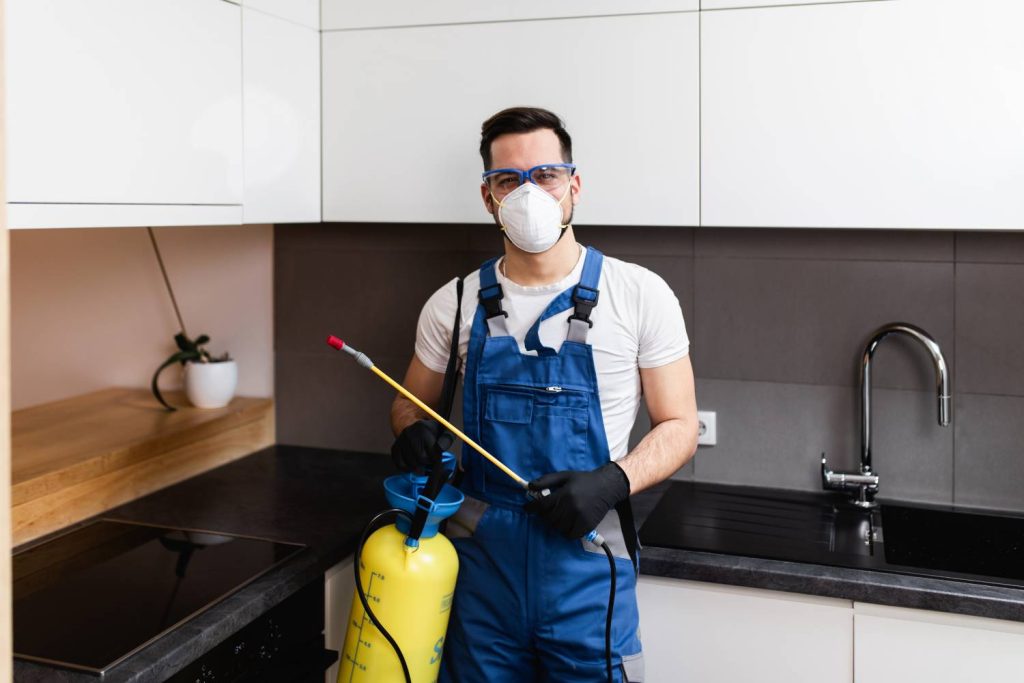Termites are wood-eating subterranean insects that can harm structures such as houses. The head, thorax, and abdomen are the three separate body sections of these tiny, soft-bodied insects, which range in size from 4 to 11 millimeters.
Termites are sociable insects that sometimes wreak havoc on wooden structures by digging massive nests in soil or wood. Although they sometimes go by the name "white ants," they actually belong to the Order Isoptera, which is entirely distinct from the Order Hymenoptera, which is made up of actual ants.
What Is A Termite?
Termites lack a waist between the thorax and abdomen and have bodies that range in color from pale brown to white with a darker head. Segments of the antennae resemble beads. The non-reproductive forms are blind, have weak skin that is prone to drying out, and never grow wings. Reproductive forms feature one pair of compound eyes, two pairs of equal-sized wings, and thicker skin that better shields them from drying out in the sun.
The dimension of termites ranges from one-eighth of an inch to one inch. Depending on their type, species, and age, they can have a range of hues of white, brown, and black. Because flying ants and termites both have wings and antennae, they can be mistaken for one another.
Depending on their species and caste, or position within the colony, termites can have a wide range of appearances. Several castes exist in termite colonies, including:
- Workers: Look for food, tend to the colony, and take care of the eggs
- Soldiers: Keep the colony safe.
- Reproductives (also known as alates or swarmers): They depart the colony to mate and start new colonies.

Habitat:
Nests can develop underground, in dirt mounds, or in trees. There are five primary types of nests, and many species will construct multiples of each type:
1. Mounds of earth
2. Tree nests (exterior to the tree, attached to an interior hollow)
3. Pole nests (found on man-made structures like telephone poles and fence posts)
4. Underground nests (in the earth, in the soil, in tree roots, and in stumps)
5. Timber (from within the tree)
Nourishment and Diet:
Not every termite consumes wood. Many kinds are not pests in buildings; instead, they feed on grass and other materials. The sapwood, or exterior wood, of trees provides cellulose, sugars, and starches, which are all forms of carbohydrates.
These species can also consume any wooden structures, including as logs, stumps, and human constructs. The heartwood, or innermost wood, is typically inedible to termites due to its higher hardness and potential for poisons. Eating fungi that grows in the humid nest—which also keeps the nest clean—or on wet wood surfaces will provide you with protein.
Specialized stomach bacteria found in many termite species aid in the digestion of the woody cellulose into carbohydrates. While bacteria are found in some species, protozoa (single-celled creatures) are responsible for producing the enzymes needed to break down cellulose. During grooming activities, especially between adults and young termites, these creatures are passed from one termite to another.
The ecosystem of the savannah in northern Australia depends heavily on creatures that consume grass and spinifex. They are comparable to huge mammals found in similar savannah or prairie ecosystems around the world because of the massive amounts of biomass they metabolize.
Breeding Behaviors
Flights for migration
When the winged reproductive forms depart from their initial nest and begin their colonizing flight, termite colonies are created. These flights typically take place in the spring and fall during warm, humid weather. The likelihood of successfully creating a new colony is increased by the appropriate mix of environmental circumstances.
Establishing a colony
The new king and queen, who have chosen a good location for mating, shed their wings, hollow out a tiny chamber, and the queen starts to lay a few eggs. At this early stage, both the queen and the king tend to the young.
The queen is left to lay an increasing number of eggs as the colony expands and the other castes assume their respective responsibilities as laborers and combatants. In the early phases of a colony, she will deposit 10–20 eggs, but after a few years, she might lay over 1000 eggs every day.
Termites Come In 4 Variations
1. Drywood termites
2. Underground Termites / Subterranean Termites
3. Dampwood Termites
4. Flying Termites
Signs of Termites at Home
Now that you understand the basics of termites, it's critical to recognize their distinctive signs. Certain termites are found in moist areas, while others prefer dry ones, and they will build their nests wherever their unique needs for food and shelter are met.
Keep an eye out for these indicators of termite infestation in your house:
- Paint peeling
- Hollow-sounding wood
- Outside, swarms of flying insects
- Rigid door frames and difficult-to-open windows
- Discarded bug wings
- Clearly damaged wood
- Mud spotting and tunnels
DIY Termite Treatments
1. Soap and water - Six tablespoons liquid soap and eight cups water should be combined in a spray bottle. Continue spraying the termite-infested area for several days, and repeat as needed.
2. White vinegar - Mix one teaspoon lemon juice, two teaspoons white vinegar, and half a cup water.
3. The diatoms of Earth - This powder is made from fossilized algae. It rips the termites' outer shell, causing them to get dehydrated and eventually die.
4. Boric Acid - This natural pesticide works well at controlling termites. When eaten, termites may die from it and experience stomach issues. However, overly dry wood will prevent the boric acid from penetrating.
5. Sodium - Add the salt and warm water to a standard quart jar and whisk to thoroughly combine. The more salt there is, the better.
6. Neem or Orange oil - This natural pesticide works well at controlling termites. Termites hate certain odors and find them disgusting. Among the common smells they dislike are those of orange oil, neem oil, garlic, cinnamon, vinegar, mint, and citrus.
Here are a few alternatives for treating termites before construction:
- Treatment of soil: Treat the soil beneath the house's footprint with liquid termiticide. Termites are instantly killed by this procedure, which also builds a barrier under and around the house.
- Chemical soil barrier: To stop termites from penetrating the building, apply a termiticide to the soil and around the building's perimeter.
- Termiticides: To get rid of termites, spray termiticide inside walls or in gaps.

DIY Termite Control vs. Professional Control
If you've quickly discovered your problem and would like to save money, you can also consider at-home care such as termite treatment with boric acid. But remember, termite damage may lead to serious or permanent structural damage to your house.
DIY methods such as utilizing the best termite killer spray or borax powder for termites can work well in the early stages of a termite infestation, but professional bait systems and fumigation may be necessary for more widespread infestations.
It can be advised to hire a professional exterminator before your property is seriously damaged, especially if you have a large colony already established or are skeptical of your abilities to manage the bug infestation on your own. Over time, savings in terms of money and time will be realized.
One of the most difficult questions for homeowners is how to get rid of termites. Termite infestations are a nuisance that can cause irreversible harm if left unchecked.
Get in contact with a professional Pest Control company right away to schedule a termite examination if you think you may have a termite infestation. The termite control staff can identify if you have an infestation fast and effectively since they are experts in termite behavior. Technicians will design and carry out a termite treatment strategy if termites are found.
Conclusion
Termites are wood-eating insects that can damage structures like houses. They belong to the Order Isoptera and have three separate body sections: head, thorax, and abdomen. They have a range of colors and can be mistaken for flying ants due to their wings and antennae. Termites have five primary types of nests: earth mounds, tree nests, pole nests, underground nests, and timber.
Termites feed on grass and other materials, such as sapwood, sugars, and starches. They can also consume any wooden structures, including logs, stumps, and human constructs. Specialized stomach bacteria aid in digestion of woody cellulose into carbohydrates. Protozoa are responsible for producing enzymes needed to break down cellulose.
Termite colonies are created during spring and fall during warm, humid weather. The queen and king lay eggs, and the other castes assume their roles as laborers and combatants. In the early stages, the queen may deposit 10-20 eggs, but after a few years, she might lay over 1000 eggs daily.
Termites come in four varieties: drywood, underground, dampwood, and flying. They build their nests in moist areas and can be identified by signs such as paint peeling, hollow-sounding wood, flying insects outside, rigid door frames, and damaged wood.
DIY termite treatments include soap and water, white vinegar, diatoms of Earth, boric acid, sodium, and neem or orange oil. These treatments can kill termites and build a barrier around the house. Before construction, soil treatment with liquid termiticide can kill termites and create a barrier. Chemical soil barrier can prevent termites from penetrating the building. Termiticide spraying inside walls or gaps can also help.
DIY termite control can be cost-effective, but it may not be suitable for severe structural damage. Professional bait systems and fumigation may be necessary for more widespread infestations. It is recommended to hire a professional pest control company for a termite examination, as they can identify and treat the infestation effectively.
Content Summary
- Termites, those wood-eating insects, pose a threat to Aussie homes.
- These soft-bodied insects have three body sections: head, thorax, and abdomen.
- Ranging from 4 to 11 millimeters, termites are tiny but mighty.
- Despite being called "white ants," termites are actually different from ants.
- Termites lack a distinct waist and come in various shades from pale brown to white.
- The segmented antennae of termites resemble tiny beads.
- Workers, soldiers, and reproductives are different castes found in termite colonies.
- Termite nests can be underground, in trees, or even on man-made structures.
- Not all termites feast on wood; some prefer grass and other materials.
- Sapwood of trees provides termites with cellulose, sugars, and starches.
- Termites aid digestion through specialised stomach bacteria and protozoa.
- Northern Australia's ecosystem heavily relies on creatures consuming grass.
- Termite colonies are initiated through mating flights in warm, humid weather.
- The king and queen termites shed their wings to establish a new colony.
- Termite colonies can expand rapidly, with queens laying over 1000 eggs daily.
- Drywood, subterranean, dampwood, and flying termites are common variations.
- Signs of termite infestation include peeling paint and hollow-sounding wood.
- DIY treatments include soap and water, white vinegar, and boric acid.
- Earth diatoms powder dehydrates and kills termites effectively.
- Neem or orange oil can deter and control termite infestations.
- Treating soil and applying chemical barriers are effective pre-construction methods.
- DIY termite control can be cost-effective but may not suffice for large infestations.
- Professional exterminators are essential for widespread termite problems.
- Termite damage can lead to irreversible harm to homes if left unchecked.
- Early detection of termite infestations is crucial for effective treatment.
- Contacting a professional pest control company ensures swift and accurate termite identification.
- Pest control technicians devise and implement effective termite treatment plans.
- Understanding termite behaviour helps in effective control and prevention.
- Regular inspections help in early detection of termite activity.
- Moisture control is vital for preventing termite infestations in homes.
- Regular maintenance of wooden structures prevents termite damage.
- Termite baiting systems are effective in controlling termite populations.
- Professional fumigation eliminates termite colonies effectively.
- Termite prevention measures save homeowners from costly repairs.
- Termite damage is often not covered by standard home insurance policies.
- DIY termite treatments should be followed up with professional inspections.
- Termite control requires a combination of prevention and treatment strategies.
- Effective termite control ensures the longevity of wooden structures.
- DIY termite control may not address underlying termite colonies effectively.
- Annual termite inspections are recommended for homeowners.
- Early intervention is key to preventing extensive termite damage.
- Termite control measures vary based on the type and severity of infestation.
- Integrated pest management strategies offer sustainable termite control solutions.
- Professional exterminators use advanced techniques to eliminate termite colonies.
- Termite baits disrupt termite feeding and reproductive cycles.
- Chemical barriers prevent termites from accessing structures.
- Regular monitoring ensures the effectiveness of termite control measures.
- Termite infestations can compromise the structural integrity of buildings.
- Effective termite control protects property values and investments.
- Collaborating with professionals ensures comprehensive termite management.
Frequently Asked Questions
For termite removal, boric acid is often recommended. A common form of boric acid is powder, which is a natural insecticide. It can be sprayed in the affected area or mixed with water and sprinkled over the infestation. While spraying the acid, it might be preferable to wear gloves, a mask, and goggles.
Drywood termites are killed with sulfuryl fluoride in a matter of days. The most effective form of fumigation is monitored fumigation, which entails placing gas monitoring lines inside the structure being treated.
If termites cause damage without your knowledge, it can be severe and expensive. Termites eat the cellulose that is present in wood. They therefore harm any timber parts or constructions in your house. This implies that there can be structural issues like buckling walls or sagging floors, as well as harm to timber decks and patios and doors.
Building a house of one's own is a universal dream, and we all want it to be flawless. Imagine building your dream house for a year or two, then finding out it's full of termites. Pre-construction termite treatment is one approach to avoid this problem for any house. In the event that your house is still under construction, contact a termite control company straight immediately.
Coating with Boric Acid: Boric acid, sometimes referred to as borax, interferes with termites' and other pests' neurological systems. It's regarded as one of the most effective natural treatments for getting rid of termites.

